field notes #1
a new series about growing plants and things
welcome to the first installment of Field Notes, a semi-monthly series where I share some updates on what’s going on at Home Farm1. in this first edition, I’ll be talking about:
what Field Notes is and what it is not
starting seeds like they’re wee little babies
infrastructure lol
little things that don’t do anything but they help with the dread
good morning I’m crying about evolution
what this is and what it is not
I’ll be very blunt: I have a deep distrust of farming content. there is a lot of farming and gardening information online that claims to teach people how to insert-incredibly-complex-activity-here in 10 easy steps! many of these folks are selling classes or a guide or some other value-add product that is meant to convince you that you, too, can run a farm or build a self-sustaining garden.
the problem with this model is that it relies on more risk than marginalized people can take and this exacerbates the already oceanic divide between white farmers and everyone else. most small farms in the US cannot function without off-farm income or generational wealth, and many of your favorite farm-fluencers are either hiding their assets or using content to supplement an otherwise failing farm business based off of an individualistic model.
I am not making “content.” I am sharing what is in my beat up old garden notebook, just as I’d share my notes on art or a thought I had about autism or something else I’m generally interested in. I make $100 a year off this substack and those 2 subscribers are hopefully not here to learn how to farm (hey y’all, I love you so much). none of this is behind a paywall, nor will it ever be explicitly monetized.
I also think transparency on my part is important here:
my partner does a lot of the hard labor of farming because I don’t know how to do it and also I’m a poet by training and we are notoriously useless2.
our off-farm income comes from my corporate job and assets we have acquired (like land) through generational wealth. this is not a bootstraps story.
we have not sold a single vegetable yet.
we are white, which gives us a lot of access to agricultural wealth and knowledge we would otherwise have to work very hard against very violent systems to have.
in sum, the picture you will get from Field Notes is authentic but privileged. it’s not something to aspire to. and the underlying message behind all this is that this is a liberation-focused space. I am interested in food sovereignty and helping alleviate the effects of food apartheid, something that affects the community I live in. I am interested in access and literacy around food. I am interested in built environments for disabled people to be able to garden. I am interested in cooperative and collective models for food distribution. I think Joel Salatin and Baker’s Creek Seeds are racists.
there’s a lot of white and male and abled supremacy in farming, and I’m not going to sugarcoat those aspects of this work. you are not welcome here if you do not think race plays a major factor in who produces food in this country and who gets fed in this country. you are welcome to seek out other spaces. you are also welcome to ask questions in good faith.
lastly, krys makes stuff is not turning into a farming blog, it’s just my special interest! I have been wanting to vary some of the things I post so I can be posting more often, so this is part of that strategy. think pieces on craft and computers will still be here, don’t worry. :)
starting seeds like they’re wee little babies
first thing’s first: this has been the coldest and longest January in the Southeast in recent memory3, with several weeks of uninterrupted below-freezing weather punctuated by ice and snow. that means that what we normally plant in our greenhouse and set on heating mats were slow to germinate. it’s a very small greenhouse with no heating source other than the mats, and the onion and Bibb lettuce seeds we sowed in December have only just now started emerging. we seeded another round this past Sunday, including Lacinato kale, watermelon radish, Romanesco cauliflower, Swiss chard, and arugula. It’s jumped up to 70 this week, so already most things have started to germinate.
I’ve been taking a couple classes at the local community college on sustainable agriculture and plant science. our community is so cool, our CC isn’t just a way for students to get their general education requirements done before going off to a four-year institution, but instead has full programs in organic farming and sustainable building technology, among other traditional trades. right now, we’re learning about the process by which a seed turns into a shoot. the first step is something called imbibition (a beautiful word!!) where the seed takes in a bunch of water and begins to swell. eventually it breaks open and the radical emerges, which is what will become the root system. sometimes it looks like mold, but that’s just its baby (root) hairs, so fine and tender. this tiny emergence will hook into the soil and serve as the plant’s anchor as it tries to break the surface of the soil and extend up to the sunlight to start the process of photosynthesis.
at this stage, the baby plant is so tiny and weak, but it’s made of what are called meristem stells, the plant world’s version of stem cells. they are undifferentiated cells concentrated at the tail of the root and the top of the shoot to help with lengthening of the plant, which is why plants grow from both ends. these cells can become anything the genetic code of the plant wants: leaf, stem, root, fruit.
it feels good to get impossibly small, to dig around inside of things, to get microscopic these days. something that I can verify is growing and not diseased and failing. growing plants from seed is reciprocal along so many axes: knowing that the attention I give every morning will stimulate a fully formed living being, knowing that we may not have room for everything so the little plants will go out to friends and community members. spring is my favorite time of year because it feels so little and so bright.
infrastructure lol
one of the difficulties we’ve been facing is the fact that we don’t live on or near the place where we’ll be growing our market garden. we are building a house to live in, which is great but also presents some problems with navigating the big things you need for a farm operation, things like scheduling deliveries, making space for trucks, or even safety and security liabilities.
we’re looking at three big infrastructure projects right now: a greenhouse, a tractor, and a packing shed that will also be some cover for the tractor. I’m excited about all of it, but it does present some chicken-egg problems: we need the packing shed first so the tractor has some protection, but we also need the greenhouse to get things in the ground, but we also need the tractor to put things in the ground and possibly to transport the greenhouse materials.
a good thing: the National Resource Conservation Service has a specific funding program for purchasing high tunnels (a type of greenhouse that is lighter and more movable), so we’ll get some of those funds back. also a good thing: we thought this resource would go away with Trump’s funding freezes, but luckily they were cancelled because there are still some good and decent (or shame-able) people in this world. another good thing: there’s lots of rentals through the cooperative extension for tractor equipment that would otherwise be out of our price range4.
all of this is somewhat overshadowed, though, by Trump’s trade war, which in his first administration lost us $16 billion in trade related to agriculture. even if a farm like ours is selling locally and unaffected by the increased cost of exporting and importing food, things like fertilizer and farm equipment are going to be taxed at a much higher rate. now that our relationship with Canada’s trade economy is damaged as well, I anticipate the infrastructure for starting this business is going to cost us so much more than we originally thought.
I also worry about the general state of the economy as a result of funding freezes and tariffs, how this also affects local economies and people’s ability to purchase food. our goal right now is to do what we can to break even to reduce cost to the consumer, but also work with food banks to help place food that can’t go to market or will go to waste otherwise. I don’t know what will happen when people can’t even afford a McDonald’s hamburger.
that’s all to say that things are kinda grim, and if it means that we’ll be growing slower, then so be it.
little things that do nothing
puttering, dilly-dallying, wishy-washing, doodling, tinkering, however you wanna call it, I’m good at it. it helps with the ennui, with the abyss, with the *gestures to everything*.
my mom likes to send me weird things she finds on Temu, so last year’s gift was a set of 4 maple sap spiles. these are little things you drill into a maple tree and out comes tree sap that boils down to maple syrup. in the spring, the temperatures are below freezing at night and above freezing during the day and this pulls the sap up from the roots/ground and allows you to “catch” it midway. when the tree buds out, that pressure that pulls the sap up and out of the tree disappears and the sap turns “off.” it’s a really cool cellular process, which you can read more about here.
I didn’t know they made syrup in the South, I hear you asking. I also asked myself this. turns out, they don’t, and my mom is quickly turning into that grandma that hangs out in the woods doing crafts (I myself am “project guy” so this is genetic). most of our maples bud out really early in the spring, so it’s not economically feasible to make syrup. but you can tap just about anything, including southern maples, black walnuts, beeches, and more. I got about a half cup of syrup out of a few days of sap before the maples started budding out. I think I’ll do it again next year, and maybe start earlier.
the other little pitter-pattery thing I did this past month was make a clootie well out of one of our oldest red oaks. clootie wells are a Celtic tradition where you take strips of cloths, dip them in a natural spring, and wash your wounds with them. you then tie the cloths around an oak, rowan, or hawthorn tree growing near the well. when the cloths have disintegrated, it’s believed your wounds are healed.
I don’t have a natural spring anywhere near us, but I used water from our rain barrel and hung strips of old cloth around the tree branches. it looked pretty in the sun, and felt like I was taking something and placing it somewhere else. I’m not really a “woo” person, but I also think that our internal sense of spirit and magic keeps us buoyed when times are tough. this is, after all, why churches increase membership during politically unsettling periods. I don’t know, I guess this was church for a short moment.
good morning I’m crying over evolution again
in bits and pieces, I’ve written about how I think they’ll be a day, sometime soon perhaps, where we will only have digital traces of certain experiences. the internet sometimes goes through these cycles of realizing that Gen Z doesn’t know what butterflies are, or something similar, and I think about the kind of warped nostalgia that we get from knowing that a very human thing existed, seeing it in images or hearing it in digital files, but never knowing what it feels like firsthand.
this post about magnolias and ginkgos and bee orchids and Joshua trees and avocados is giving that particular form of nostalgia. eventually, we’ll have a database of all the bird sounds that fill our world now, with no birds. we’ll go to bed listening to crickets.mp3, and it won’t be enough, but it’ll be something, even if just a mourning sound, and it might still be something beautiful.
if you liked Field Notes, I’d love to hear from you! this is still an experiment and your support and feedback mean the world to me. <3
the name of our farm, which comes from a Terry Pratchett series about a young witch who grows up tending sheep on ancestral land her family calls Home Farm.
Wendell Berry and Seamus Heaney are exceptions here, but I am not them.
I did live through the Groundhog Day Blizzard of 2011, where hurricane-level winds accompanied a snow storm that dropped like 2 feet of snow on Chicago. there was thunder, I was terrified.
the cooperative extension system is one of America’s greatest achievements, imho (one day I will write my think piece (tm) on this exact subject). anyone, not just farmers, can take advantage of their programs and offerings, so go on down to your local office and ask your questions!!


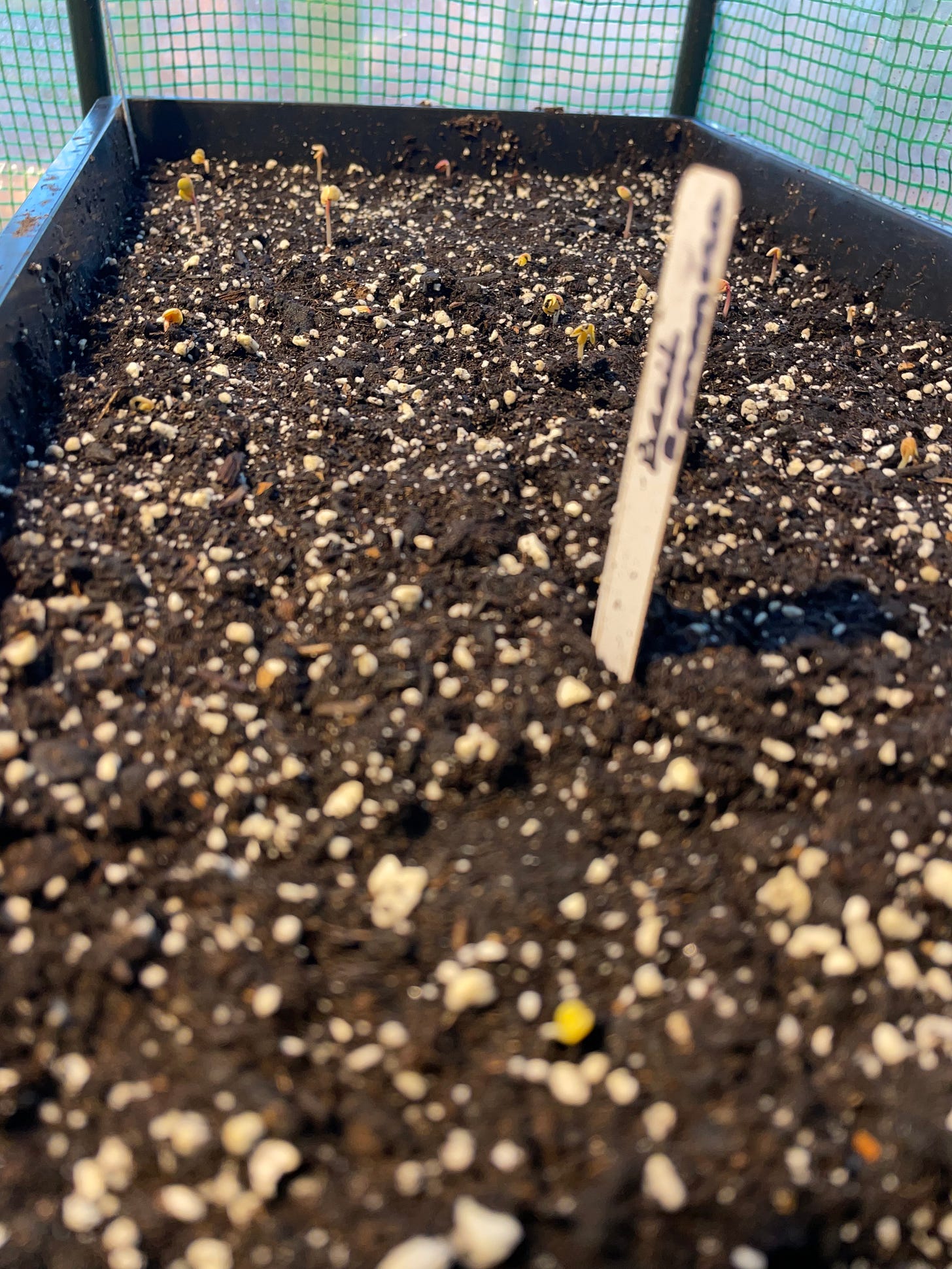
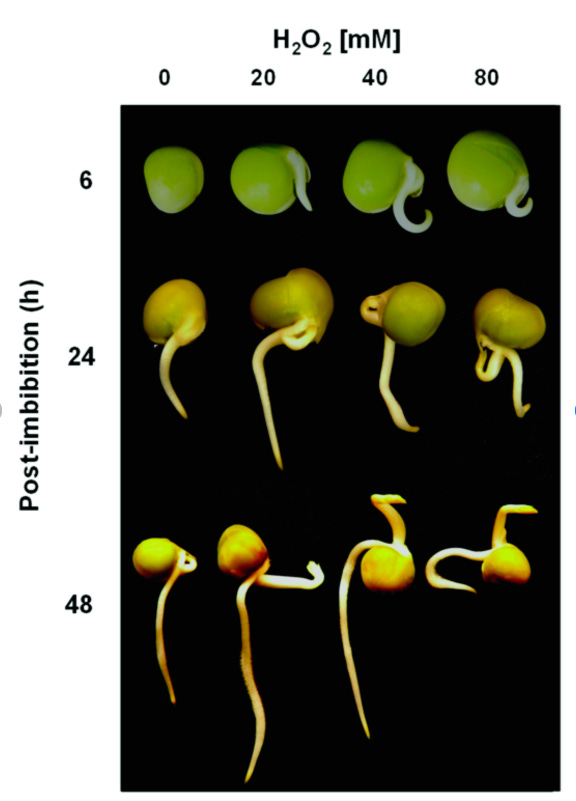
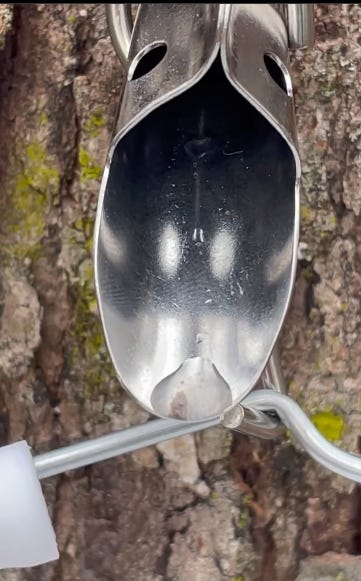
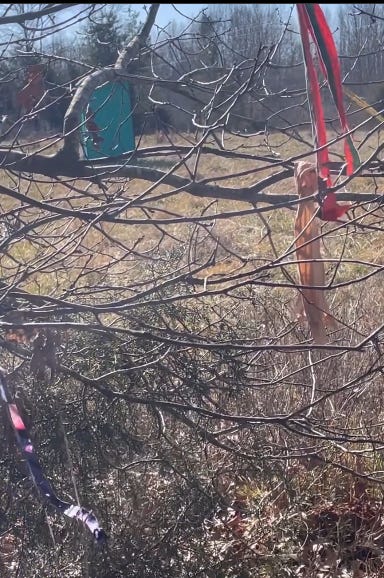
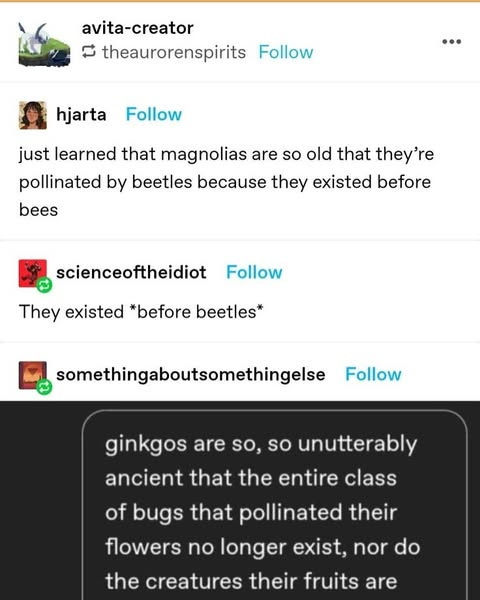
I like your writing. Thank you.